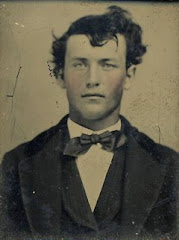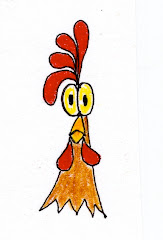Everything I learned about hog butchering I learned from the Mesko family at Lighthouse Farm in Minnesota. I couldn’t be there in person to learn the process but the Meskos taught me how it’s done by way of their delightful DVD titled, Hog Butchering.
You may be wondering what is so delightful about killing a hog and cutting it into pieces. Well, I’ll admit, the process of killing and cutting (that which the movie is primarily about) isn’t particularly delightful. But seeing the Mesko farm and four generations of the family contribute to the movie is.
The DVD begins with John Mesko and his wife, Lisa, outside in their barnyard discussing food and hog butchering. As they are speaking, hogs are ranging freely around them, a rooster crows in the background, the family dog walks onto the set looking for some attention, a little kitten is exploring about, and in the far distance, you can see John and Lisa’s two young daughters happily playing. Obviously, this is no factory farm the Meskos have. It is a Family Farm.
During their introduction, John and Lisa talk about modern, industrially-farmed food and the way food used to be raised. It was once common for families to raise their own hogs and butcher the critters themselves. Lisa relates how her grandfather raised hogs and she has the photos to prove it. One old picture (the one on the cover of their DVD) shows a hog so big and fat it looks like a small blimp about to rise into the air.
Lisa never had an opportunity to help butcher hogs but John did. He helped his family process their homegrown pigs starting when he was around eleven years old.
Those of us who know something about John Mesko know he recently left a “good” career in Big Ag to return, after many years absence, to the farm where he grew up. He and his family are working to bring the farm back into sustainable production. Raising hogs, for themselves and others, is part of the plan.
John’s father is now up in age and out of farming. It is not likely he has butchered a hog in years. But it is clear that he is an old hand at it, and he is the mentor. We see the father and his son working together to prepare for butchering day. They hang a pulley from the rafter of the barn and sharpen the knives. I found it powerfully endearing to see the older Mesko and his son working together to reestablish this family tradition of hog butchering.
And endearing is surely the word to describe John’s grandmother. John and Lisa interview her at the kitchen table and we hear this dear, 95-year-old woman speak fondly of the old days, when the family butchered their hogs.
Great grandmother Mesko talks of eating such delicacies as kidney, stomach, liver, and feet. She recollects how all the family, children too, would sit around the table cleaning hog intestines so they could be used as sausage casing. The point being: “Nothing went to waste.”
In another scene we find John showing us the gun he will use to kill the hog. He shows how it works and explains where he will endeavor to place one (hopefully only one) deadly shot.
Then we see John in the family’s home telling his two girls what will happen when he shoots the pig in the head with the gun. This is all new to his children. Their father tells them that the first shot may not do the job and if that is the case, the hog will squeal and squeal until he can shoot it again.
Then comes the dramatic day when John and his dad go out to the livestock trailer where the unsuspecting hog is. John has the gun. They crack the door open a bit. The pig walks right up to them, probably hoping for something to eat, or maybe to get his back scratched. John holds the muzzle of the gun close to the animal’s head and tries his best to aim at the right spot but the pig’s head is in constant motion.
The shot is fired. The stunned pig backs up. John’s father exclaims, Too low! Too low, John! I’ll not reveal how the rest of the drama unfolds. But I can assure you, this is real life hog butchering.
Once the hog is dead and bled out, John’s father hooks the hind hocks of the animal into a gambrel. They muscle the heavy carcass into the barn and hang it from the rafters. Hog butchering is hard work.
With the hog hanging, the work of skinning begins, They choose to skin the beast rather than scald and scrape the hair off its hide. Skinning is just plain easier to do. The two Mesko girls now assist their father and grandfather in the work of skinning. They are learning at a very young age (just as their father did) the reality of where ham, pork chops, bacon, and sausage come from.
And the girls learn what lard is as they help to slice buckets of the hard fat off the hanging carcass. We can be certain that a portion of that lard will be used to make Grandma Mesko’s Hungarian Crackling Biscuits.
Next comes the task of cutting the pig’s head off and removing the entrails. There are lots of internal organs on display and, at one point, John extracts a steaming pig heart to show the girls. Once the hog is gutted, it is cut in half and we get a front row view of how all of this is done.Then John carries half a hog into the house and we get a lesson on cutting out the ham, shoulder roast, pork loin, ribs, and bacon.
At the end of the DVD we see the entire family gathered in the kitchen for a meal. They are eating food from an animal they raised and butchered themselves.
It is not “mystery pork” from a far away industrial hog production facility, containing chemicals and medicines and who-knows-what. They knew this hog. They lovingly raised it from a baby. The animal had a good life on their farm. It had plenty of room to run and play in the fresh air and sunshine, to eat corn and graze grass, and root it’s rubbery snout in the earth, looking for tasty morsels (tasty if you’re of the porcine persuasion). But the animal was not a pet; it was raised to be eaten. That was its highest purpose in life. That is what hogs are for. We see the cycle of the animal’s life and death and its contribution to the vitality of this family farm.
Yes, oh yes, this really is a delightful film because, in addition to learning how to butcher a hog (something I plan to do one day), I saw the example of a younger generation that has returned home to its agrarian roots, eager to learn from the older generation, while it still can. And, in so doing, the younger generation is honoring the older. This is wisdom in action.
John Mesko has coined a term for what he is doing. He calls it Authentic Agriculture. It is agriculture as it once was; agriculture that nourishes families on the land, physically, spiritually, and socially. It is agriculture as it should be. It is a beautiful thing.
Lisa Mesko produced this DVD and she did an excellent job of it. Get yourself a copy. You'll like it too. Here's the link: Hog Butchering
Calibrated to cities
-
Don, as you may recall, suffers from a malady we dubbed "Poliphobia" –
namely, a "fear" of cities.
This is not a real phobia (an irrational fear), of cou...
6 hours ago
























































































































4 comments:
Hmm, I'll have to look into that... thanks for sharing
Great post! I'm glad you included a link to the video. I definitely have to get a copy. Both you and John should be commended for taking a subject like "hog butchering" and showing it for something noble in the greater context of multi-generational agrarianism!
Thanks, also, for the reminder of what it is I am reaching for. As we struggle with decisions between too much house and too much land within the confines of a limited budget, it is good to get such reminders.
The link no longer works... Is this available still. dkeeton00@yahoo.com
I wrote this essay almost four years ago. I can't find anywhere where the DVD is available on the internet.
I suggest you go to the Mesko's web site and e-mail them asking about availability.
The web site is: www.lighthousefarm.com
Post a Comment